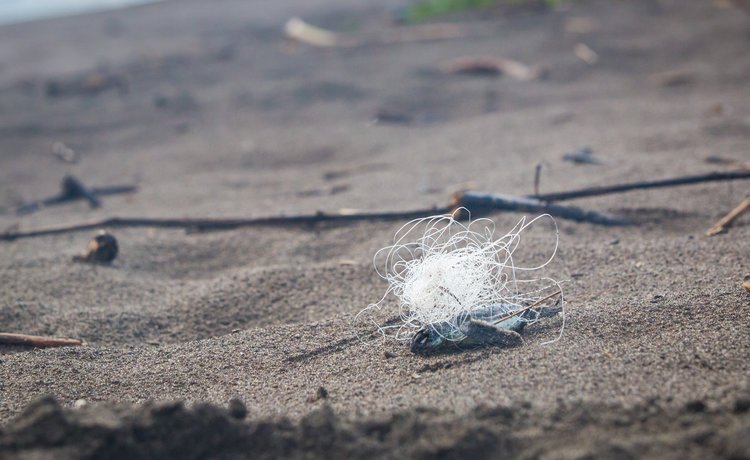Plastic Pollution
Turtles often mistake plastics for food. Many sea turtles eat jellyfish, and a plastic bag floating in the ocean looks very similar to a swimming jellyfish.
One of the most devastating impacts of our fossil fueled society on sea turtles is our (mostly unintentional) introduction of plastics to marine environments. Plastics are present in nearly every body of water on the planet. Floating plastics accumulate in large-scale circular ocean currents, called gyres, in subtropical zones. There are five major oceanic gyres worldwide and each one is overloaded with plastic debris. Scientists estimate North America and Asia account for 80% of the plastics swirling in the North Pacific Subtropical Gyre and another 20% are attributable to intentional or accidental dumping from boats. Sadly, these oceanic “garbage patches” continue to grow as we add another 8 million metric tons of plastic to global oceans each year.
Leatherbacks have evolved as specialized jellyfish predators with an extra-long esophagus studded with backward-pointing papillae to prevent prey from escaping. These papillae also prevent a leatherback from regurgitating a plastic bag swallowed in error. Accidentally ingested plastics can block airways or induce starvation by filling up a turtle’s digestive tract with undigested material. They can also block normal gas flows, resulting in a buildup of gas within the turtle’s body that prevents the animal from diving. Unable to regulate their buoyancy, these turtles become susceptible to boat strikes.
Plastic is not completely biodegradable. Large plastics just fragment into micro-plastics less than 5mm in diameter. Ingestion of micro-plastics can result in absorption of polychlorinated biphenyls and other toxic chemicals.
Take Action for Sea Turtles:
-
• Carry your own cutlery and refuse single-use plastic utensils.
• Shop with reusable bags to avoid plastic bags.
• Refuse plastic straws and carry a reusable metal, glass or bamboo straw if you need one.
• Bring your own take-out containers to restaurants and reject plastic to-go containers.
• Support bans of single-use plastics (straws, bags, utensils, etc.) in your area.
-
• Pick up stray plastics in your yard, neighborhood or local park.
• Participate in and organize cleanups of your neighborhood, beach or business district.
• Collect trash from storm drains, waterfronts and streets to prevent plastics from reaching the ocean.
• Ensure your plastic waste is properly sorted and secured to prevent accidental escape, especially on windy days.
• Ask officials where your trash and recycling goes, how it is processed and what improvements could be made.

